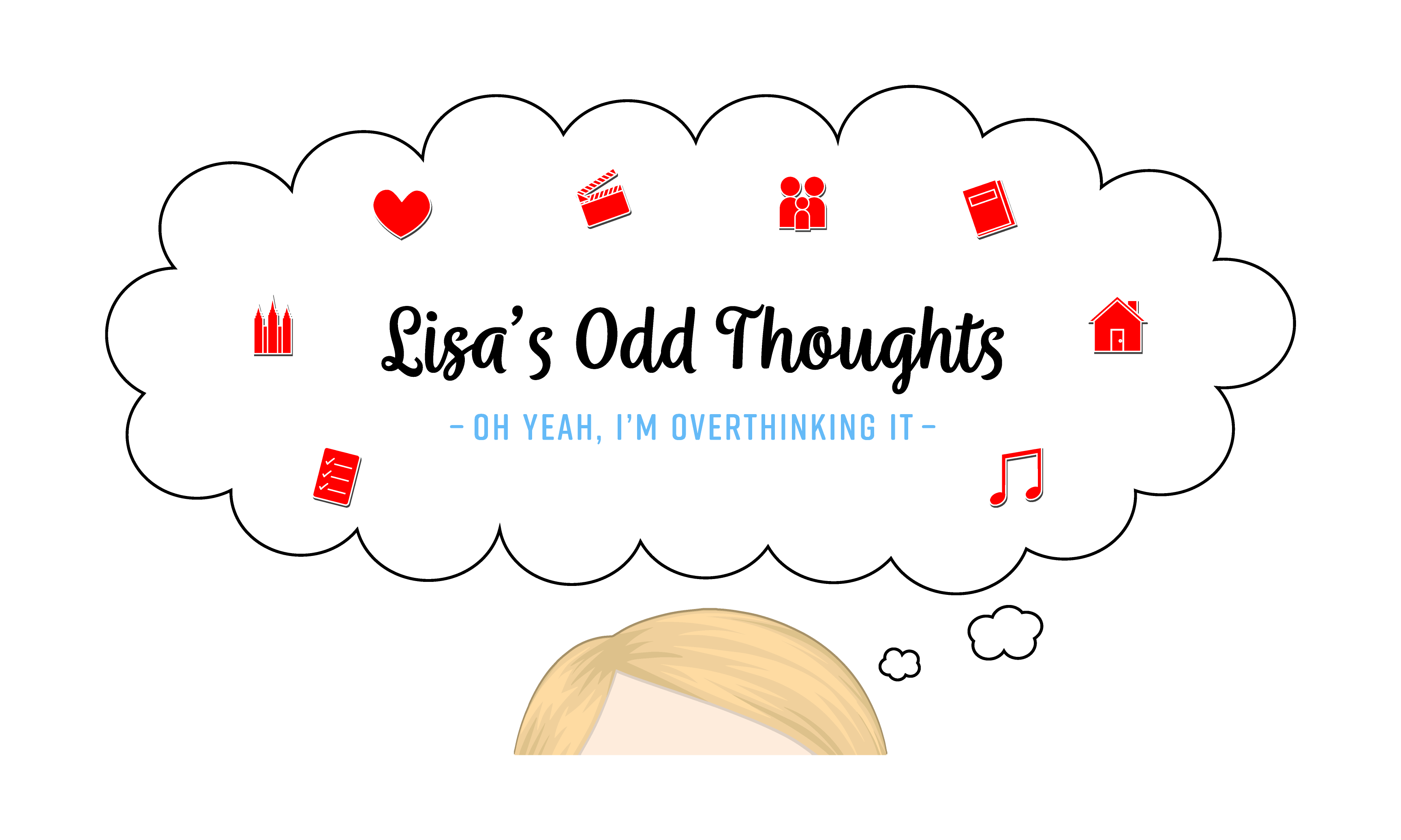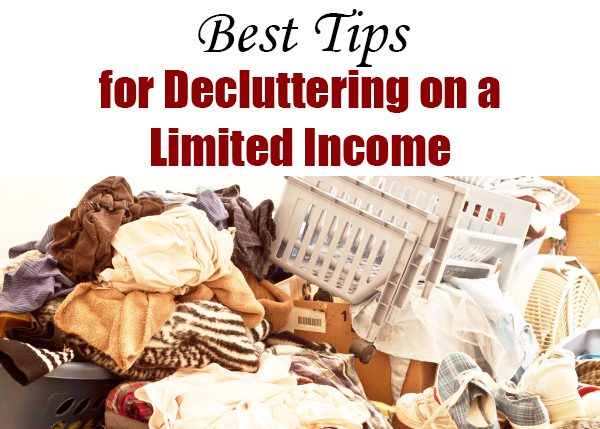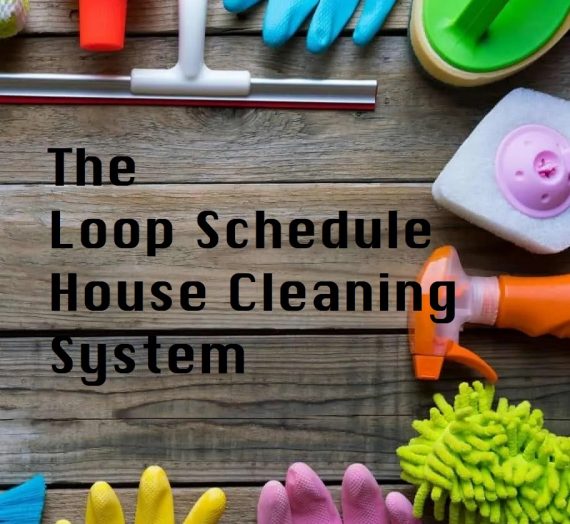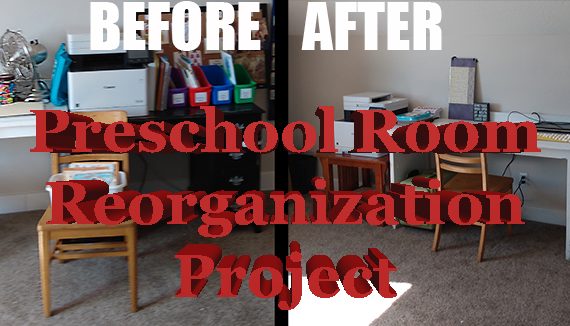I consider myself a minimalist at heart.
No, I don’t really care for the minimalist art style with plain, straight lines. That’s not what I’m talking about.
I’m talking about living a minimalist lifestyle. To me that means that everything I own has value and purpose. I don’t want to clutter my life with superfluous and unnecessary stuff. After all, to quote my mom, “The more stuff you have the more stuff you have to take care of.”
So I try to decorate intentionally and only with pieces I really love. I try to dress the same way. I try to only keep toys for my children that spark their imaginations and that they really enjoy. I try to keep my house organized and orderly, and having fewer things in it means that whole process goes faster.
“Have nothing in your house that you do not know to be useful or believe to be beautiful.”
William Morris
Notice I say “try” here. I don’t claim to be the world’s greatest minimalist by any means, and I don’t claim to be 100% successful with my attempt 100% of the time. I’m a work in progress, as is maintaining my home and life in a minimalist way.
On a related note, I really love organizing. Nothing is quite as refreshing as transforming a messy closet into a clean one all organized with bins and labels and all that jazz that will make my life run more smoothly and happily. Yes, yes, yes!
I also really love decluttering. I find it equally refreshing to unload useless, broken, or unneeded items out of my house and see the new space it clears out. Yes, yes, yes!
Therefore, I read a lot of minimalism, organizing, and decluttering articles. I enjoy organizing shows and I’ve read a good number of decluttering books. It’s a topic I study a lot and really enjoy.
But whether you’re reading Marie Kondo’s book, trying out Swedish Death Cleaning, or watching The Home Edit, essentially they all boil down to the same principles: get rid of the junk you don’t need.
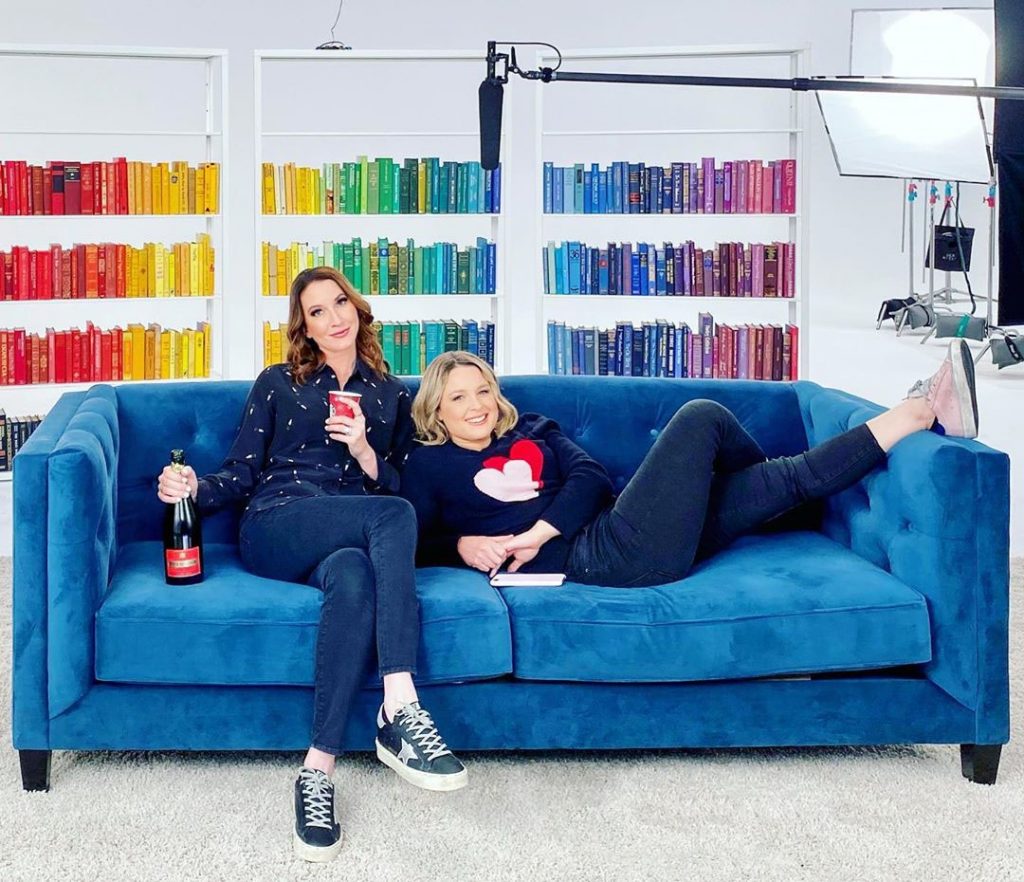
And I wholly and completely hold with that idea.
But I will very honestly present a critique of this decluttering philosophy that I don’t often see addressed:
Decluttering is often a privilege enjoyed by the wealthy.
Let me explain.
One of my guilty pleasures is watching Hoarders. Besides that it satisfies my enjoyment of cleaning things out and organizing spaces, I’m also fascinated by the psychology of these hoarders and the psychology of what helps them and what hurts them.

Because I was interested in the show I did a little research about the disorder (and about the show guests themselves). I learned that hoarding is most often triggered by some kind of traumatic event and a very common such event is having struggled through a period of poverty. Surviving or presently enduring such a state often gives a person the mentality of, “I have to save this item forever, because I never know if I’ll ever be able to afford it again.”
If you watch the show many of the episodes have common beats, and this is also a very common one. Hoarders doesn’t go into the fanciest and richest neighborhoods; most often you’ll find low-income people who have severely financially struggled. In fact, without the help and support of the show, many of those people never would have been able to afford the tens of thousands of dollars it typically costs to hire that cleanup crew with trucks, dumpsters, and of course a psychiatrist.
I’m not trying to bash these people who appeared on the show, not in any way shape or form. On the contrary, I genuinely feel like watching the show gave me a new empathy for people who are very sincerely trapped by their finances, not to mention their own mental health.
While Hoarders highlights the most extreme hoarding examples (what I read about the show said that they had so many applicants that they purposely chose people who were in the most dire circumstances, as in their children had been taken away by Child Protective Services, their homes were on the brink of being condemned, they were being threatened with jailtime, or that sort of thing), these extreme aspects are still applicable to less-extreme cases.
Because this essay is about practicing minimalism for low-income people, I’m going to focus on the financial side of decluttering, particularly that same issue I talked about above: surviving or enduring a state of poverty or low income that will often result in a hoarding mentality.
Even in less extreme cases, you’ll commonly see this mentality manifest itself in smaller ways. A low-income hoarder might keep ketchup packets from fast food places or flimsy hangers from the dry cleaners; after all, that’s saving money, right? And even if this person had two hundred flimsy or broken hangers filling up every closet in his home, this hoarder would still refuse to get rid of them for fear of having to one day buy new hangers that he couldn’t afford.
But minimalism teaches the exact opposite of this mentality. Minimalism teaches to only keep what you need and to use what you keep. If a hanger is broken or flimsy, it no longer serves its purpose and therefore should be thrown out. Only keep enough hangers for your needs, and only keep ones that are in working condition.
I agree.
But I also sympathize with the low-income person who genuinely can’t afford new hangers in the future.
So what to do?
Well you don’t have to be super rich to still practice a minimalist lifestyle. I’m going to give you two suggestions for still decluttering your home like a minimalist, while also not losing sleep worrying about not having enough hangers.
Now compulsive hoarding is actually a diagnosable mental illness. Just because your house is cluttered doesn’t necessarily make you a “hoarder.” If you do think that you need psychiatric help in order to tackle your clutter or that you might possibly have compulsive hoarding behaviors, then please, by all means seek professional help.
If finances are a struggle, go to your church leaders first and ask if they can recommend free or cheap counseling. You don’t need to struggle alone and there’s no shame in asking for help.
But for now let’s move forward with the assumption that you don’t suffer from that particular mental illness, but that you simply want to get your overwhelming stuff under control and simplify your life, all without breaking the bank.
Got it? Good. Now let’s talk two big tips for decluttering amidst financial struggles.
Tip 1: If It’s Still Usable, Store It and Use it Later
As I read organizing and decluttering tips and tricks, I most often come across advice like this: “You don’t need fifteen pairs of pants. Keep five and donate the rest.”
Generally that’s good advice and I totally agree…
Unless you’re living paycheck-to-paycheck.
Let me paint you a hypothetical picture:
You’re frustrated because your closet and dresser are constantly overflowing and you can never find what you need in the mess. Your space is simply too small and it’s always a disaster that you can barely access.
You want to declutter your clothes and regain your closet space, but are holding onto them for fear of not being able to afford new ones in the future.
What you have in this scenario is a volume problem: too much stuff and not enough space to house it.
Note: clothes are one of the most common volume issues. Other high-volume items in your home might include shoes, books, DVDs, crafting or hobby supplies, or if you have children then it likely is toys, toys, and more toys!
Regardless of your income, I still suggest you first follow basic decluttering steps. Marie Kondo’s system is great for specifically decluttering high volumes of stuff.
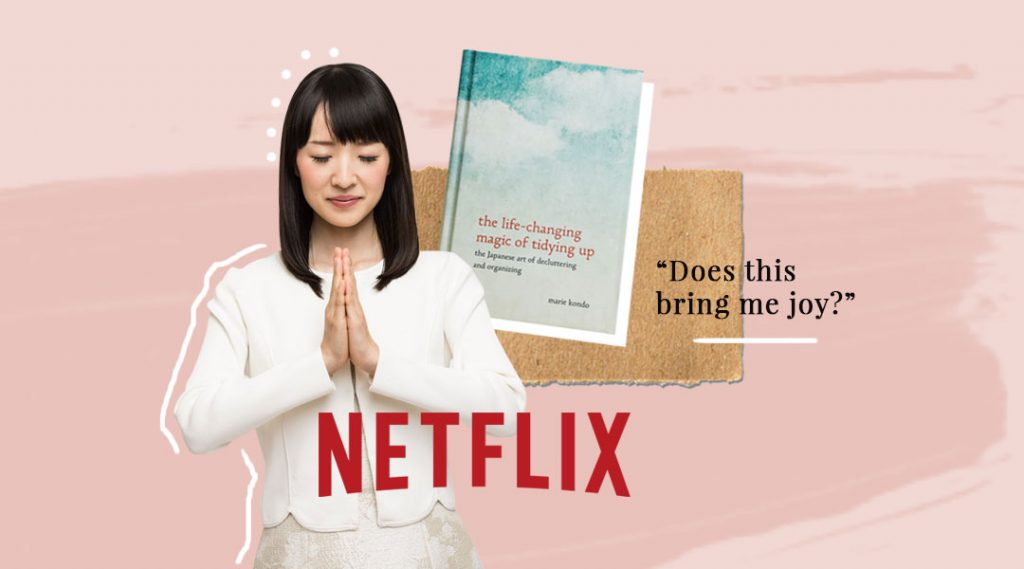
Move all your clothes out of your closet/dresser/bedroom and gather everything in one space, such as your living room. Go through item by item and decide whether or not it is worth keeping. Marie Kondo would suggest that you ask yourself, “Does this item spark joy?” I’m on board with that, if it floats your boat.
But I’ll be the first to admit that question isn’t flawless. You might have an all-time favorite pair of jeans that certainly spark joy, but are worn through and riddled with holes. Regardless of the joy that item might spark, if it’s no longer usable than its no longer worth keeping.
Besides the sparking joy question, let me give you some advice for weeding out the automatic-throwaway pieces. Do NOT keep clothes that are:
- Damaged or worn
- Stained
- Torn or ripped
- Don’t fit your current body* (even if you think you’re going to lose weight in the future)
*One of the rare few exceptions I’ll accept for this clothes-that-don’t-fit rule is pregnancy. Obviously you’ll need a collection of maternity clothes if you are currently pregnant or are planning to get pregnant in the future, and obviously you’ll need your non-pregnant size clothes for after the baby comes. But pregnancy is a hyper-specific reason to keep clothes that don’t currently fit. That’s not what I’m talking about here.
Specifically this rule is to discourage you keeping things that used to fit way back in high school. I know we all think that on some magical day we’ll finally lose a bunch of weight and fit into those skinny old classics again. But don’t fall into that trap. Don’t keep these kinds of clothes, clothes that don’t fit your current body.
So maternity clothes yes, but someday-I’ll-go-on-a-diet clothes no.
That being said, DO keep clothes that:
- Are in good, wearable condition
- Fit you appropriately and comfortably
- Make you feel great about your body!
- Have sentimental value*
*Yes, I don’t mind keeping sentimental things that have value to me, even clothes. A harsher minimalist than myself might scoff at this notion, but to that person I tsk my tongue and tell him to mind his own darn business. Remember, minimalism means that everything I own has value and a purpose, and sentimental items can most certainly have both those things.
I personally have a collection of T-shirts from my high school and college days that I’ll probably never wear again in my life, but still I keep them because I value their sentimentality. If you’re in the same boat I suggest this: Wash and fold your sentimental clothes then store them in clean, gallon-sized Ziploc bags in your Memory Box, not in your closet. Your closet should be reserved for regularly-worn items that you need daily access to, which definitely excludes sentimental items. Keep those old school shirts, but keep them in the appropriate place, which is in your Memory Box, not your closet.
Let’s move on with our theoretical closet-decluttering.
Say that you’ve followed those steps, have gotten rid of clothes that are damaged or ruined, packed away your sentimental items in a Memory Box and put it away in your storage room, and you still have fifteen pairs of jeans.

These are nice jeans, remember, based on the rules I just outlined above. These all fit you, they’re in good shape, and they very much bring you Marie-Kondo-style joy-sparking.
So you’re looking at these fifteen pairs of good jeans but your drawer only has room for five.
A traditional minimalist would suggest you get rid of the extras. You don’t need fifteen pairs of jeans.
That’s true.
But you paid good money for those jeans and you can’t afford new ones after your designated five are gone. That can be a scary situation to find yourself in, financially speaking. You might want to give up, cram all fifteen into your overflowing dresser where they don’t fit, and toss out this entire minimalist idea as “only for the wealthy who don’t have to worry about the price of jeans.”
Wait! I have the answer for you.
First, get a storage box–any box will do. Label it clearly and visibly, “Extra Jeans”. Then pick your five for your drawer and pack the other ten in your box.
Put your box somewhere accessible. This is not a box to get lost in the mess of your basement or shed. This is not something you’re going to have to declutter a few years down the road because you forgot about it. Remember where your box is. Remember what’s inside your box. Don’t lose your box. Put your box somewhere accessible.
This is actually another big principle of minimalism that I try to implement in my life. Not only do I decorate and dress intentionally and with purpose, but I store items intentionally. Everything in my storage room is clearly labeled and accessible. There are no surprises in there and I know all the general locations of my various long-term storage items, from baby supplies to sentimental memorabilia to holiday decorations. Remember, minimalism doesn’t just mean that you shouldn’t own stuff, but that the stuff you own is valuable and purposeful.
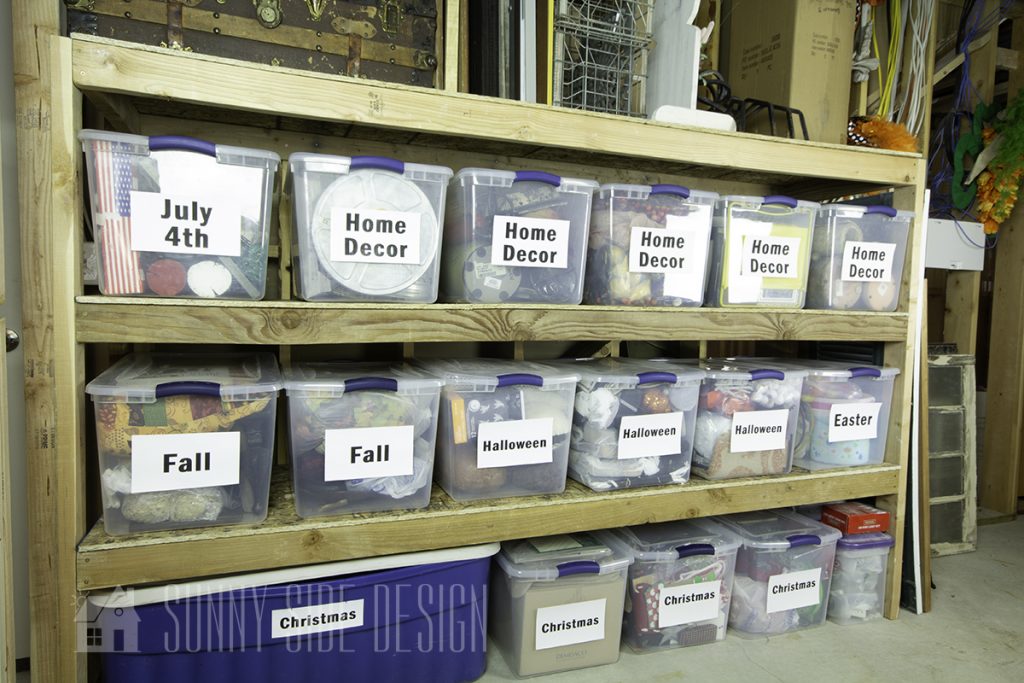
Another tidbit from Marie Kondo: Marie Kondo is famous for suggesting that you verbally thank your possessions before you toss them out. A lot of people find it a little weird to verbalize your gratitude to your old socks out loud. If that weirds you out that’s fine, don’t do it, but it’s the principle of the thing that I especially appreciate. Marie Kondo is all about respecting your possessions, which includes thanking them when their services to you are done and over with.
Leaving your clothes on the floor, stepping on your important papers that are piled up, letting your trinkets get lost and broken in your clutter–none of these things shows respect for your possessions. Why do you even have these possessions if you don’t respect, use, and enjoy them?
I feel the same way about long-term storage items. Store your possessions in a safe and accessible way. If storage boxes aren’t labeled or are lost in the hubbub of your shed for decades on end, then you aren’t respecting your possessions. And why do you even have and store these possessions if you don’t respect them?
Whew, that was a tangent! The point is this: store your extra jeans appropriately and respectfully.
The next step? Wear your five jeans. Wear them all the time. Wear them to pieces, quite literally. Find all that joy in your jeans that would make Marie Kondo proud.
Now every time one of your original jeans gets worn out–stained, ripped, etc.–toss it out. Remember what I said above: don’t keep things that aren’t usable, and destroyed clothes are not usable.
Then, simply and easily, go to your “Extra Jeans” box–the one that you very clearly remembered and kept accessible and didn’t lose–and pull out another pair of pants for your drawer. There! It’s like having a whole new pair of pants. And best of all, you didn’t lose all that money you originally spent on all those pants and you don’t have to shell out $50 for new ones from the store.
I’m using the example of jeans here, which are typically pretty similar. But the same principle applies for more unique clothes items too. You might have twenty unique dresses but only room for five; pick five and then store the rest. Or you might rotate through your dresses every season or so to keep things fresh, but this principle will still keep your closet organized, accessible, and uncluttered.
On the opposite end of things, you might want to keep old clothes as work clothes, something ratty to wear for painting or doing heavy yardwork. I’m on board with that too, but only keep one set of work clothes accessible in your closet; extras should be stored away until your first set is so worn out that it has become quite literally unwearable.
The takeaway principle from this tip is this: your closet should be for regularly-worn items you need daily access to. Don’t clutter up your closet with extra items; store those extra items in a more appropriate location until you do need them.
I saw an exact could-be example of this on Hoarders, believe it or not. One woman, while cleaning out her hoarded house, found over 60 brand new, individually packaged toothbrushes. She said that she had an acquaintance who worked in a dentist office and so regularly gave her these free toothbrushes, which she always kept. But she packed them away and forgot about them among the rest of her hoard.
Even in this scenario, keeping new toothbrushes isn’t bad, just like keeping well-fitting, good-condition jeans isn’t bad.
What’s bad was the way this woman lost and forgot about her toothbrushes and therefore never used them. That right there is the problem.
On the show they convinced this woman to toss out the toothbrushes, but of all things to toss, that was probably the only one I saw on the entire show that I disagreed with. If organized and used properly, this stash of free toothbrushes could have been used and valued in the true spirit of minimalism.
Note: from the brief glimpse I saw of this box of toothbrushes, they all looked perfectly fine to me, except a bit dusty (but they were individually packaged, remember, so the toothbrushes themselves were perfectly fine). If they’d been damaged, opened, or covered in mouse feces (a common trait of hoards featured in the show) I would have absolutely said throw those out pronto! So perhaps they were more ruined than the 30-second glance at them on the show and I just couldn’t see it.
But my Storage Box system would have used those toothbrushes beautifully. Put your 60+ toothbrushes into a clean, accessible, clearly-labeled box, “Extra Toothbrushes.” And use a box with a lid, by golly, which this woman didn’t do and is what made her toothbrushes so dusty. Whenever your toothbrush needs replacing, simply reach into your box, grab a new one, and go.
Remember what I said earlier about financially-struggling hoarders might save things like ketchup packets, thinking that they are saving money? Well here’s the kicker: you’re only saving that money if you actually use said ketchup packets, or said free toothbrushes. If you keep going out to buy new toothbrushes despite the lovely stash you have at home because they are lost, then you’re not saving a single penny. In scenarios like this, especially if you’re struggling to make ends meet, then by all means use the free toothbrushes and save that money!
But let me emphasize the most important part of this system: REMEMBER YOUR BOX. REMEMBER TO USE YOUR BOX. DON’T LOSE YOUR BOX. That toothbrush-hoarder woman was genuinely surprised to find toothbrushes hoarded away in a deep corner of her house, and that is NOT the goal here. Keep your box accessible. Remember that it’s there, and DON’T LOSE IT.
Tip 2: Appropriately Keep “Maybe I’ll Need This in the Future” Items
The first example of having fifteen pairs of jeans was a volume issue, remember.
But there’s a second issue you might face in your decluttering that has nothing to do with quantity, but quality. I’m talking about “Maybe I’ll Need This In the Future” items.
These kinds of items aren’t in large quantities, like clothes. These might be the rare kitchen gadget or office item and typically have a very one-use specific purpose.
I, for example, have a zester that I only use for two specific recipes, but I know and love those two recipes so I keep my zester even though it only sees the light of day a handful of times a year.
But let’s talk about you. Let’s theoretically declutter your kitchen and you find a zester. Do you need a zester? Do any specific recipes that require lemon zest come to mind, right here, right now?
Let’s theoretically say no, no they don’t. You have no memory of ever using that zester, nor do you have any definite plans to use it in the very near future.
A typical minimalist would tell you to toss it. If, five years down the road, you suddenly find a bag of lemons on your doorstep and have the uncontrollable urge to zest them, then simply just go buy a new zester. Keeping this one, unused and taking up valuable kitchen space, for five whole years isn’t worth it.
Generally I agree…
Unless you’re living paycheck-to-paycheck.
First let’s talk about the true merits of that suggestion. Yes, it’s supposed to forcibly teach you that you probably will never actually need a zester. If you’re looking at a kitchen gadget and thinking, “I don’t even remember the last time I used this,” then the answer is most likely that you haven’t ever used it, and therefore most likely won’t ever use it again in the future.
So toss it out, says the decluttering minimalist. And generally I agree.
Secondly, we live in a consumerist society which means that most of our products are pretty cheap (for better or for worse). When we’re talking about small kitchen gadgets or office items, we’re not typically talking about bank-breaking items here.
Zesters themselves are pretty cheap and a quick search on Amazon showed the top four results ranging from $9-$11. To some, $10 might not be a big deal. Sure, if you stumble upon a recipe for which you really need that zester that you decluttered five years ago, then by all means go buy yourself a new zester for ten measley dollars and move on with your life.
But to others, that precious $10 might be a significant portion of your grocery fund that you simply can’t waste on a zester.
So what do to?
First, get another storage box. Whatever items you think you might need in the future but couldn’t afford to buy a new one, put into this box.
And like before, clearly label this box and REMEMBER it. Keep it accessible and REMEMBER what’s inside it.
I specifically recommend two different labels for this particular box. Label the main, biggest, and most readable part of the label, “Do I Need This?” or something along those lines. Then, when looking through your very organized, very neatly-labeled storage boxes you can find it quickly based on this big, easy-to-read label.
Second, make a smaller label and list very specifically everything that goes into that box. “Zester, Apple Corer, Avocado Slicer,” etc. This helps so that if the day comes when you do need a zester, you don’t have to dig through the entire box wondering if you actually indeed have one. On that day, just pull out the box, read the small list-label, and move on with your day.
Also date the box. Put it away somewhere clean, safe, and where you’ll remember it, and go on with your life.
Let me also remind you this: The same rules for keeping clothes also apply here. Do NOT keep items that are broken, rusty, or hard to use. Only keep that zester if it’s in good condition and is actually usable. Do NOT keep any items, kitchen or otherwise, that aren’t usable, need repairs, or are in bad shape.
Say weeks and months go by. Suddenly you indeed find yourself in need of a zester. Go to your “Do I Need This?” box and read the secondary label to see if you have listed that a zester is inside. If yes, then pull out that lovely little zester, go to town on those lemons, and then put the zester away in the kitchen; it has proved its usefulness and earned its right to take up space in your house. And you’ve saved yourself $10 by not having to buy a new zester when you already had a perfectly good one right here.
But say those weeks and months keep going by and no need for a zester comes up. Check your box after an entire year has passed (this is why you dated the box in the first place). If you need to, set a reminder on your phone for one year from the day that you first packed that box away.
Open up your box and see what is left inside. If you still haven’t used these items in a whole year, then chances are very high you never will. Donate them with the comforting knowledge that you won’t have to rebuy something useless in the future.
I like to use a year specifically for this kind of thing because it covers all holidays and seasons. I indeed have a few seasonal recipes that require very specific kitchen gadgets that I only whip out quite literally once a year. I still keep those once-a-year gadgets because I know for sure I’ll use them again come the following year (I have a rolling pin for making homemade Thanksgiving pie crusts and chocolate dippers for making Christmas candy, stuff like that).

Let’s Talk Boxes
You’ll notice that both my suggestions here necessitate the use of a storage box. And if you’re really in financial straights, then buying a fancy, plastic, new storage box might be just as out of the question as that new pair of pants.
I love storage bins and boxes, oh yes I do. But that means that I also know that they can get really expensive really quickly, especially if you’re buying them in bulk. “I’m going to organize my whole garage and so I need ten big storage bins!” Expect to spend at least $100, easy.
So let’s talk some solutions.
First let me emphasize that as much as possible I avoid cardboard boxes like the plague. They’re great for moving, yes, but not for long-term storage. Cardboard is way more susceptible to bugs, rodents, and other damage, especially water damage, and you’ll ruin whatever is stored in there.
And cardboard just looks tacky. There is simply no getting around this issue. Cardboard is ugly, but plastic bins are pretty.
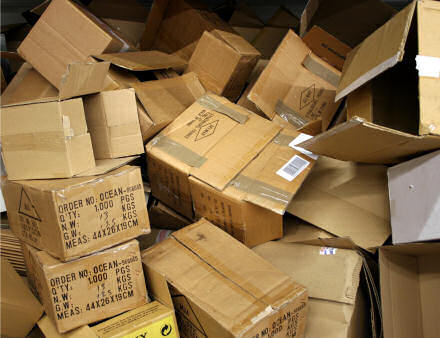
That being said, we’re not talking ideal here, we’re talking necessary. And I am willing to sacrifice some of that plastic beauty in the name of financially necessity.
Firstly, let’s talk about plastic bins. If you are financially able, I truly implore you to go plastic if possible. Either way, it’s still smart to watch for sales or coupons. Good bargains await the patient.
Also keep your eye on your local Facebook garage sale pages. Watch for people posting storage bins for sale, and you’re likely to get a good deal there.
Secondly, let’s talk cardboard. If, in terms of finances, plastic bins really aren’t an option for you, that’s okay. Cardboard is way, way cheaper. You can get a whole bunch at home improvement stores like Home Depot or moving stores like Uhaul.
And you can always replace your cardboard boxes with more reliable and sturdy plastic in the future when finances allow.
Further, if buying new cardboard boxes isn’t available to you, there are free options too.
First and easiest of all, put the word out to your friends and family and ask if they have any boxes they need to get rid of. Specifically I’d reach out to someone who has a baby and ask for diaper boxes. I’ve found that diaper and wipes boxes are wonderfully sturdy and a good, usable size.
Or again, keep that eye on your local Facebook page; sometimes people post that they’ve just moved and are offering their cardboard moving boxes for free.
Second, if you work in an office, check to see if they have paper boxes they are recycling (schools are another great place to get empty paper boxes). Or you can go to your grocery store and they often have empty cardboard produce boxes that are heading to the trash (this is where I happened to get a bunch of free cardboard boxes for when we moved).
So however you can, get a hold of some boxes. They’re out there, you just have to know where to look.
Use Minimalistic Principles to Help You Save Money
I’ve just said that a minimalist lifestyle can be a privilege of the wealthy. But I have good news! One of the biggest benefits of minimalism is that it will actually help you save money.
Have you heard the phrase, “Time is money”? Well, “Material possessions are money” too. The more possessions you have, the more money you have to spend on things like storage shelves, units, and bins. You have to have a place to put all those things, either in storage shelves or display cabinets. And you need cleaning supplies to care for your things, to dust them and wash them and all that stuff.
And, beyond those financial issues, having more stuff means you have to spend more of your time taking care of that stuff. And yes, time is money.
Further, remember the point of minimalism: everything you own should have a purpose and a meaning.
A minimalistic lifestyle means that you are purposeful about what comes into your home. You’re not spending frivolously on items you don’t need (or items that you know and remember are in your “Extra Jeans” box at home). You’re not buying useless items just because it’s on sale. You’re not impulse-buying for the fun of it. When your possessions have purpose, then your spending on your possessions has purpose also.
And that’s a good thing.
So if you feel drawn to the minimalistic lifestyle but don’t know where to begin, I suggest beginning with your finances, regardless of your financial situation. Minimalism, remember, extends to your entire life, such as the hobbies you spend your time on, the people you choose to be with, the possessions you take care of in your home, and the things you spend your money on.
Minimalism is about making everything in your life useful and purposeful, even your finances. And I think that’s what I like about minimalism best of all.
Minimalism Isn’t Just for the Wealthy!
Fighting low-income situations is a big issue, and one that doesn’t have an easy, cut-and-dry answer. I wish I could just say, “Well just save your money!” But I know that it’s not nearly so simple, especially when you’re living paycheck-to-paycheck and already working extra side jobs just to make ends meet. There probably isn’t any money that you could “just save.”
I get it. It’s hard, and I understand. And you probably feel trapped where you are.
You might be looking at these beautiful, Pinterest-worthy pictures of minimalistic homes that are practically perfect in every way, and those pictures might be overwhelming; you might never be able to afford all the high-end matching furniture or the dozens and dozens of uniform, plastic bins.
That’s hard, but it’s okay. You don’t have to keep up with Pinterest.
Just because you’re interested in living a minimalistic lifestyle doesn’t mean that you have to break the bank to do so.
Remember, minimalism doesn’t just mean that you get rid of stuff and post pictures of your perfect, empty house online. Minimalism is about making your possessions, time, and finances meaningful and purposeful.
